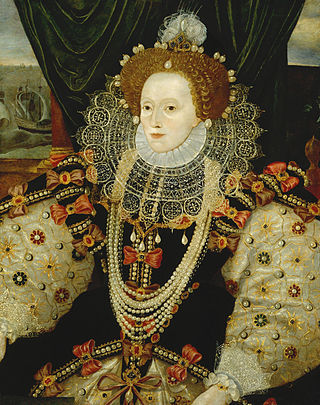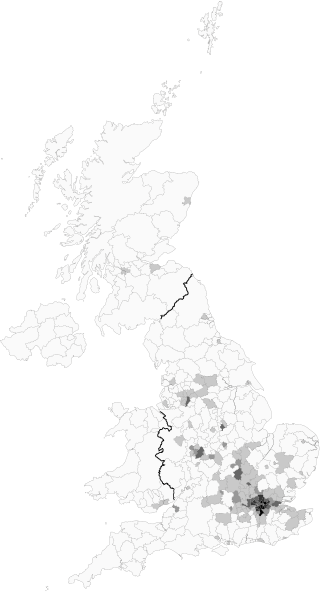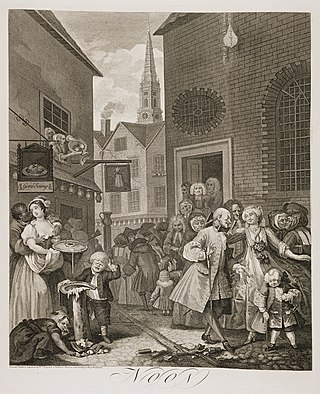Related Research Articles

Elizabeth I was Queen of England and Ireland from 17 November 1558 until her death in 1603. She was the last monarch of the House of Tudor.

Mary I, also known as Mary Tudor, and as "Bloody Mary" by her Protestant opponents, was Queen of England and Ireland from July 1553 and Queen of Spain and the Habsburg dominions as the wife of King Philip II from January 1556 until her death in 1558. She is best known for her vigorous attempt to reverse the English Reformation, which had begun during the reign of her father, King Henry VIII. Her attempt to restore to the Church the property confiscated in the previous two reigns was largely thwarted by Parliament, but during her five-year reign, Mary had over 280 religious dissenters burned at the stake in the Marian persecutions.

The House of Tudor was an English and Welsh dynasty that held the throne of England from 1485 to 1603. They descended from the Tudors of Penmynydd, a Welsh noble family, and Catherine of Valois. The Tudor monarchs ruled the Kingdom of England and the Lordship of Ireland for 118 years with five monarchs: Henry VII, Henry VIII, Edward VI, Mary I and Elizabeth I. The Tudors succeeded the House of Plantagenet as rulers of the Kingdom of England, and were succeeded by the Scottish House of Stuart. The first Tudor monarch, Henry VII, descended through his mother from the House of Beaufort, a legitimised branch of the English royal House of Lancaster, a cadet house of the Plantagenets. The Tudor family rose to power and started the Tudor period in the wake of the Wars of the Roses (1455–1487), which left the main House of Lancaster extinct in the male line.

Year 1554 (MDLIV) was a common year starting on Monday of the Julian calendar.

The Elizabethan era is the epoch in the Tudor period of the history of England during the reign of Queen Elizabeth I (1558–1603). Historians often depict it as the golden age in English history. The symbol of Britannia was first used in 1572, and often thereafter, to mark the Elizabethan age as a renaissance that inspired national pride through classical ideals, international expansion, and naval triumph over Spain.

Anne of Cleves was Queen of England from 6 January to 12 July 1540 as the fourth wife of King Henry VIII. Not much is known about Anne before 1527, when she became betrothed to Francis, Duke of Bar, son and heir of Antoine, Duke of Lorraine, although their marriage did not proceed. In March 1539, negotiations for Anne's marriage to Henry began, as Henry believed that he needed to form a political alliance with her brother, William, who was a leader of the Protestants of Western Germany, to strengthen his position against potential attacks from Catholic France and the Holy Roman Empire.

African Jewish communities include:

Lady Mary Keyes was the youngest daughter of Henry Grey, 1st Duke of Suffolk, and Frances Brandon, and through her mother had a claim on the crown of England.

In England and Wales, the Tudor period occurred between 1485 and 1603, including the Elizabethan era during the reign of Elizabeth I (1558–1603). The Tudor period coincides with the dynasty of the House of Tudor in England, which began with the reign of Henry VII. Under the Tudor dynasty, art, architecture trade, exploration and commerce flourished. Historian John Guy (1988) argued that "England was economically healthier, more expansive, and more optimistic under the Tudors" than at any time since the Roman occupation.
Eric William Ives was a British historian who was an expert on the Tudor period, and a university administrator. He was Emeritus Professor of English History at the University of Birmingham.

Black British people are a multi-ethnic group of British people of either African or Afro-Caribbean descent. The term Black British developed in the 1950s, referring to the Black British West Indian people from the former Caribbean British colonies in the West Indies sometimes referred to as the Windrush Generation and Black British people descending from Africa.

The history of African presence in London may extend back to the Roman period.

The Tudor period in London started with the beginning of the reign of Henry VII in 1485 and ended in 1603 with the death of Elizabeth I. During this period, the population of the city grew enormously, from about 50,000 at the end of the 15th century to an estimated 200,000 by 1603, over 13 times that of the next-largest city in England, Norwich. The city also expanded to take up more physical space, further exceeding the bounds of its old medieval walls to reach as far west as St. Giles by the end of the period. In 1598, the historian John Stow called it "the fairest, largest, richest and best inhabited city in the world".

Americans in the United Kingdom or American Britons are emigrants from the United States who are residents or citizens of the United Kingdom.
Linda Porter is an historian and British novelist.

Andrew Daries Jephtha was the first black boxer to win a British boxing title, winning the welterweight title in London on 25 March 1907. However, Jephtha is not often recognised as the first black British boxing champion.
Mary Lacy was a British sailor, shipwright and memoirist. She was arguably the first woman to have been given an exam and a pension from the British Admiralty as a shipwright.

Ellen or Elen More was an African servant at the Scottish royal court. She probably arrived in Scotland in the company of a Portuguese man with imported animals. There are records of clothing and gifts given to her, although her roles and status are unclear. Some recent scholarship suggests she was enslaved, and her arrival in Scotland can be linked indirectly with the slave trade. She is associated with a racist poem by William Dunbar, and may have performed in Edinburgh as the "Black Lady" at royal tournaments in 1507 and 1508.

Henry or Henrie Anthonie Jetto was a black English yeoman, the earliest-known black person with an extant will in England and the earliest to have resided in Worcestershire.

A number of people of African origin were recorded as servants at the Royal Court of Scotland during the 16th-century, forming a notable African presence at the Scottish royal court. The accounts include gifts of clothing. The American scholar Kim F. Hall has characterised these people as "dehumanised alien curiosities", and their histories, roles at court, and their relationships with communities, are the subject of continuing research and debate.
References
- ↑ Bakre, Tolu. "Unforgotten Black Women: Mary Fillis, A Seamstress Driven By Independence". Refinery29 .
- 1 2 3 4 Taylor, Mildred Europa (June 28, 2022). "The extraordinary rise of Mary Fillis, a successful seamstress from Morocco who lived in Tudor England in 1500s". Face2Face Africa.
- 1 2 "BLACK TUDORS...A peek into the lives of ten people of the African Diaspora who lived in Tudor Britain". Black History Month 2023. February 14, 2008.